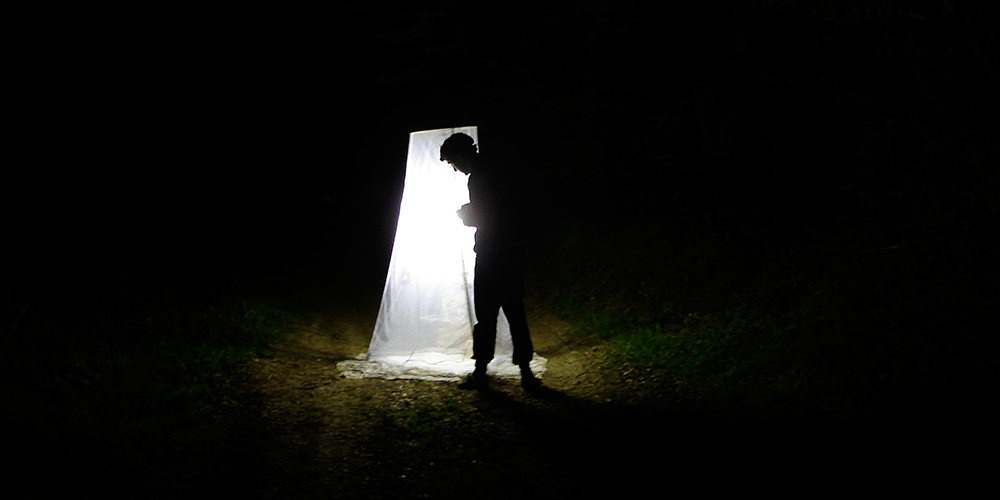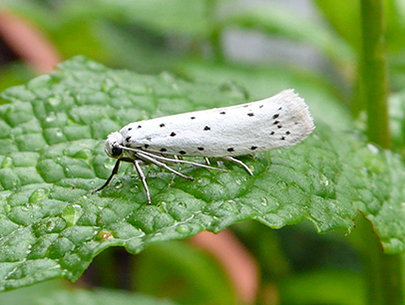City Moths Avoid the Light
The globally increasing light pollution has negative effects on organisms and entire ecosystems. The consequences are especially hard on nocturnal insects, since their attraction to artificial light sources generally ends fatal. A new study by Swiss zoologists from the Universities of Basel and Zurich now shows that urban moths have learned to avoid light. The journal Biology Letters has published their results.
12 April 2016
Some insects are attracted by light while others shy away from it. Proverbial is the attraction light has on moths. Street lamps and other artificial light sources often become death traps for nocturnal insects such as moths. Either they die through direct burning or through increased exposure to predators. Mortality of urban insects can thus be 40- to 100- fold higher than in rural populations.
Artificial light affects the ecosystem of insects by interfering with their natural day-night cycle and influencing behavior patterns such as feeding and reproduction. Swiss Zoologists have now studied whether moths in the Basel region have already evolutionary adapted to the changed light conditions.
City moths are less attracted to light
Under the assumption that natural selection would favor moths with less propensity to fly to light in urban areas, the researchers examined the small ermine moth Yponomeuta cagnagella. For the experiment they collected larvae in the Basel region in areas with low light pollution such as the village Kleinlützel and in areas which have been exposed to heavy light pollution, such as Allschwil or Basel City.
The researchers then analyzed the flight-to-light behavior of almost 1050 adult moths in the lab. The results show: moths from populations that have been exposed to heavy light pollution over generations have a significantly lower propensity to move towards light sources than individuals from areas with low light pollution. Furthermore the study shows that in both types of populations the female moths were attracted to light significantly less then their male counterparts.
Darwinian adaption to urbanization
The study results suggest that natural selection has changed the animals' behavior. Flight-to-light propensity is disadvantageous for moths in light polluted areas. Adapted moths avoid the light and thus have a survival advantage. Even though this evolutionary change reduces the high mortality by artificial light, it could also have negative implications for the community. A consequential reduced overall mobility of the insects could for example lead to reduced pollination of plants.
Original source
Florian Altermatt and Dieter Ebert
Reduced flight-to-light behaviour of moth populations exposed to long-term urban light pollution
Biology Letters (2016), doi: 10.1098/rsbl.2016.0111
Further information
- Dieter Ebert, University of Basel, Department of Environmental Sciences, Tel. +41 61 267 03 06, email: dieter.ebert@unibas.ch
- Florian Altermatt, University of Zürich, Department of Evolutionary Biology and Environmental Studies, Tel. +41 79 222 98 10, email: florian.altermatt@eawag.ch



